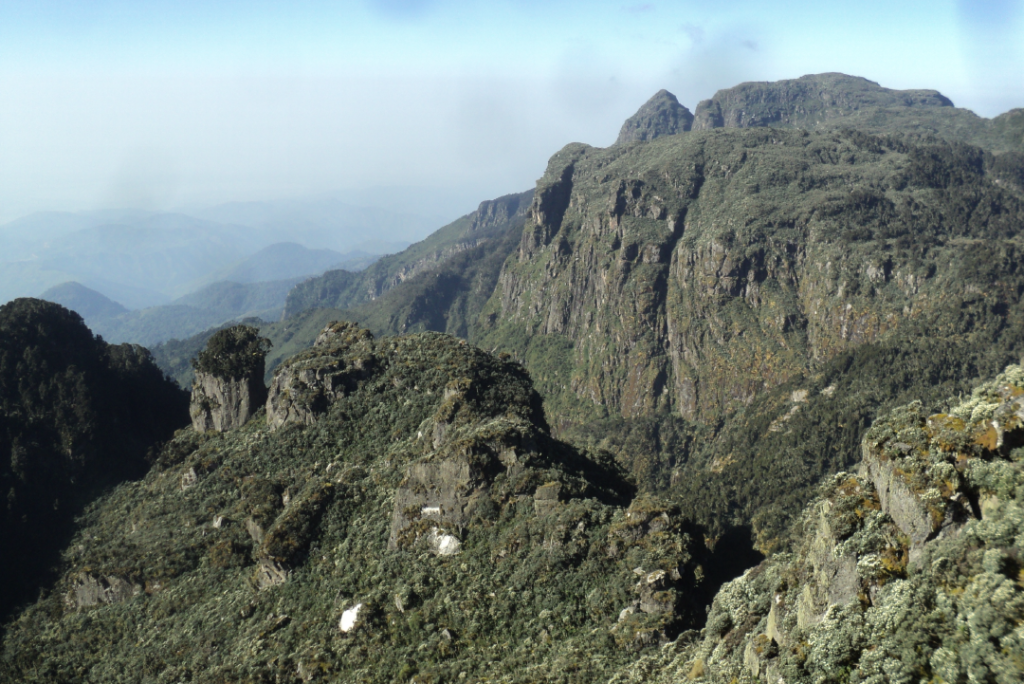The trail down the Nyamwamba Valley from Kiharo Camp is mostly downhill and absolutely stunning with beautiful views. The moss covered rocks along the river, cascading waterfalls, deep valleys and forests are possibly the best in the Rwenzori Mountains. This part of the trail took us six years to find a way through and a route which is easy enough for tourists to use. In 1937 the explorer and geologist McConnell tried to find a way up this valley but failed and have to turn back and search for another route up the mountain but now you can experience this truly beautiful valley.
A few kilometers from Kiharo Camp the path turns off to the right to pass along the river. In the clear areas you may catch a glimpse of a Duiker quietly feeding in small clearings as you pass along the river. A few kilometres down the river the trail drops down a steep section of the river where we have many switchbacks to make the walking easy. Along this section we have constructed small offshoots from the main trail so as you may enjoy the waterfaslls close up and may even decided to have a swin to freshen up. The first of these falls is Cathy’s Falls which particually after heavy rain is spectular, the nest is Nyamwamba Falls which has a total hieght of 52 metres and a deep pool at the bottom where you may swim, For the nest 600 metres the river drops rapidily down a series of rapids to Ajarova Falls and Plozza Falls.
These group of waterfalls were first discovered in August 2020 by John Hunwick who found himself locked down in the National Park during the first Covid lockdown and spent his time exploring new areas and new ideas for trails. John named the third falls after his mother Kathleen Plozza and also to the spirit of John’s Great Great Grandfather Antonio Plozza 1850 – 1923 who lived high up on the mountainside of the lower Poschavio valley on the Swiss Italian border near Tirano and loved walking and exploring the mountains. Below Plozza Falls there are more waterfalls ending with the Bridal Falls where the water flows over a large flat rock to create an effect simular to a brides veil.
Half way down these falls the bamboo zone starts creating an amazing atmosphere with the mist from the falls feeding the moss covered bamboo and evergreen grasses and herbs which the Rwenzori Duiker feed on. It is common to see Duiker along this section and is home to the Rwenzori leopard which is rather dark in color and only found in the Rwenzori mountains
The forest along this section is magnificent and full of life with many birds, primates, duikers and hyrax. When you reach Forest View Camp at 2,580 metres above sea level we stop for a well earned lunch and drink while looking over the dense forest to the valley below and Kilwembe township. A great experience and fantastic ending to the trek.

















